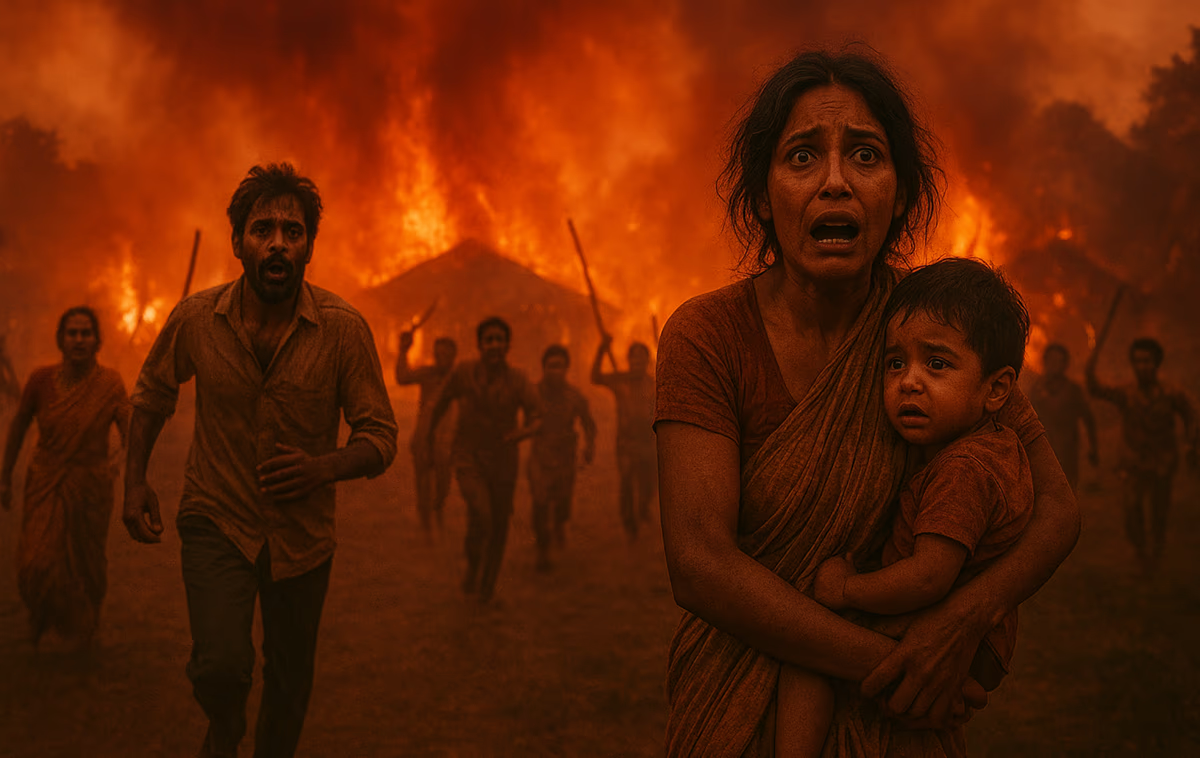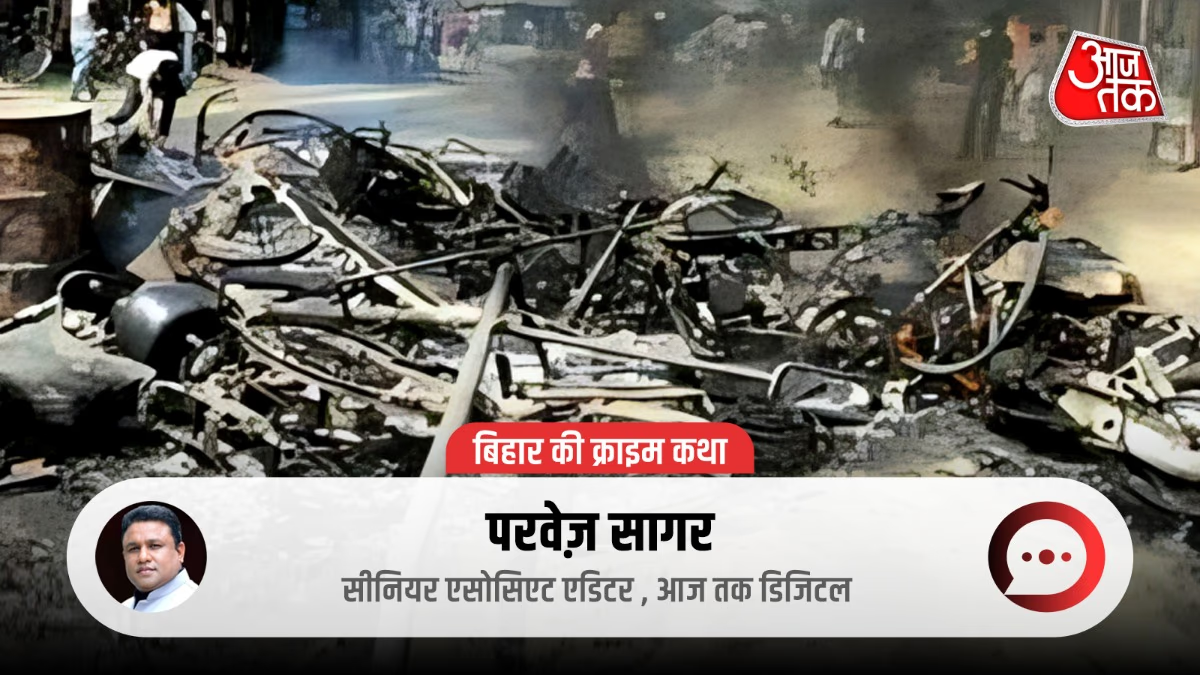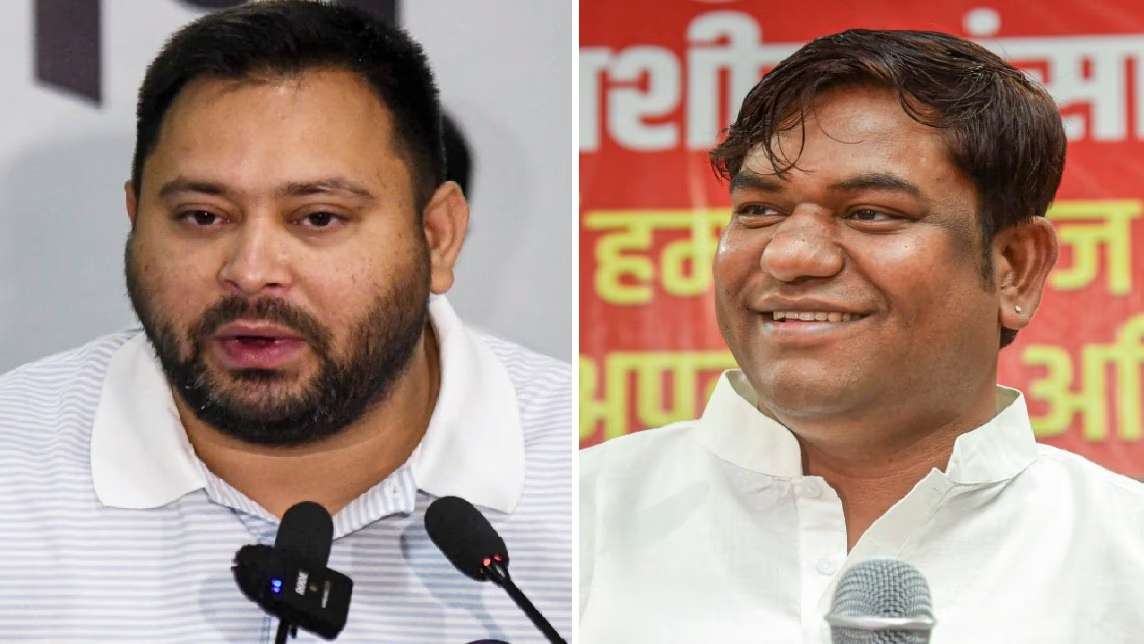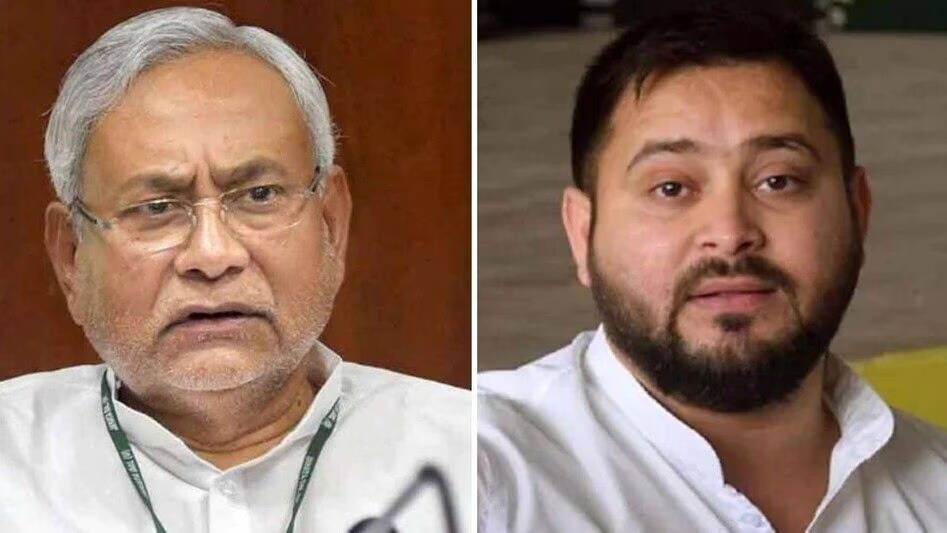The Tale of Crime in Bihar:
With elections approaching in Bihar, the ruling and opposition parties are showcasing their strength. Bihar was once a land that saw India's largest communal riot post-independence. This soil was stained not only by caste massacres but also by communal strife. This time, in Bihar's crime story, we narrate the harrowing tale of the Bhagalpur riots that still chills the heart. The story unfolds at a time when the Ram Temple issue was at its peak across the country.
Impact of the Ram Temple Movement
On October 24, 1989, Bhagalpur district witnessed a seemingly ordinary morning shrouded with the scent of gunpowder. Temples were ringing with bells, echoing chants of 'Jai Shri Ram' in the streets. The nationwide Ram Temple movement was at its peak, unknowingly setting the stage for Bhagalpur to ignite in communal flames. No one anticipated the calamity that would soon engulf Bhagalpur.
Tension Rises First in Fatehpur
Tension and hatred had simmered between communities since October 22, two days prior, in Fatehpur village. Sloganeering and threats further poisoned the atmosphere. People sensed something disastrous looming. However, the administration was oblivious, leading to a negligence that resulted in thousands of lives lost.
The Blaze in Tatarpur
On October 24, a procession in Tatarpur area of Bhagalpur turned violent due to alleged stone-pelting, sparking riots citywide. This wasn't spontaneous; it was premeditated. Reports suggest extremist right-wing groups had pre-prepared lists of targets. The flames of hatred rapidly spread, targeting minority areas. This ghastly violence continued unchecked.
Destruction Across 250 Villages
The violence spread so rapidly that over 250 villages in Bhagalpur were transformed into blood-soaked battlegrounds, impacting neighboring districts like Munger, Godda, Banka, Sahibganj, and Dumka. People fled to jungles and fields seeking safety. Mothers shielded their children hoping to save them, yet the mobs' hatred spared none. Rampaging crowds tore through everything, slicing children and ripping open mothers. Young men lay gutted. The ground seemed dyed red. Law and order were conspicuously absent.
Read More - The 23-Year Tale from Belchi to Miyapur, When Bihar was a Land of Vengeance!
Cabbage Growing Over Corpses
According to the government, 1,062 died in these riots, but an 'Indian Express' report revealed the death toll was actually 1,874. Over 80,000 were left homeless. Bodies filled wells, ponds, and fields, hiding all evidence. Bhagalpur became a graveyard of countless bodies.
Massacre in Logai Village
On October 27, 1989, Logai village witnessed an inconceivable massacre. Here, extremists selectively killed 116 Muslims and buried their bodies beneath the fields, planting cabbages to hide the evidence. Excavations uncovered 116 buried skeletons, staining the land as a bloodied testament to the atrocity.

Source: aajtak
The Story of Jamila Bibi
Media reports tell the tale of Logai's Jamila, preparing bread as her children cried in hunger. Her husband, Muzaffar, rushed in, urging her to flee. In panic, Jamila grabbed her children and escaped, surviving the riots but leaving behind a life shattered. The mob tore women, slaughtered children, and silenced the elderly.
Questionable Role of Police
Witnesses claimed police either stood watching or aided rioters, sometimes guiding them. As riots intensified, law enforcement was unseen. The army was deployed too late. District officers misled both BSF and army. Congress ruled Bihar then, with Satyendra Narayan Sinha as Chief Minister.
Silence from Power, Screams of the People
The Bhagalpur riots spiraled out of control as the government remained silent. Allegations accused both state and central government of deliberate delay. By the time the army arrived, over 1,000 homes were burnt. The entire nation was shaken. Historians call it the largest post-independence riot, a massacre. Political pressure led to Chief Minister Satyendra Narayan Sinha's resignation, marking Congress's decline but justice for victims remained a dream.
Main Orchestrator, Kameshwar Yadav
Truth eventually surfaced, revealing Kameshwar Yadav as the massacre's orchestrator. His private army of 200 men terrorized Bhagalpur, killing 1,200 Muslims. During the riots, his followers basked in chaos while his hands were stained with innocent blood.
Political Change in Bihar
News of Bhagalpur's horror spread globally, with international media portraying it as modern India's most horrific massacre. Post-Congress, Janata Dal took power. Lalu Prasad Yadav became the new Chief Minister, yet justice was elusive. Many accused were acquitted, shielded by political connections, sharing platforms with leaders, their hands still bloody.
Justice Denied to Riot Victims
For 15 years under Lalu Prasad Yadav's rule, investigations dragged without priority. Main accused like Kameshwar Yadav roamed freely, honored in rallies while victims languished. Families rotted in relief camps, children orphaned, women suffered silently.
A Ray of Hope with Nitish Kumar
In 2005, Bihar saw a political shift with Nitish Kumar's administration. Hope dawned for riot victims. A commission led by Justice N.A. Singh investigated the violence. In 2007, 14 were convicted for the Logai massacre. Some victim families received compensation and pensions, yet the cries of 116 souls echo, demanding justice.
Questions Rising from the Ashes of Bhagalpur
Over three decades later, Bhagalpur hasn't healed from its terror. Many villages remain desolate, families estranged from their lands. It's not just a riot narrative but evidence of human depravity and legal failure. The 1989 Bhagalpur riot left an indelible stain on India's ethos, one that may never be erased.




